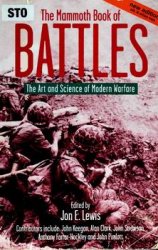Western Christianity in the middle of the fi fteenth century was a powerful political,
intellectual, and economic institution, and also a lived experience of rituals, practices,
and beliefs. Most people accepted the church’s power, and found religious activities
meaningful, but a signifi cant minority were dissatisfi ed with the church as an institution
and with common spiritual practices. They complained that absentee bishops, or
bishops who held more than one diocese, did not supervise priests very well; that monks
and friars were greedy and immoral, wheedling money out of people, maintaining
concubines, and living too well; that priests were barely able to read and write in any
language, and just mumbled the mass in Latin without understanding what the words
meant. Educated reformers such as Erasmus and Lefèvre agreed with these anticlerical
criticisms, and also saw many popular religious practices as foolish or misguided.
Instead of spending their time on pilgrimages or their money on relics or indulgences,
people should help the needy or pray, they asserted.
In the late fourteenth century John Wyclif ( c . 1330–84) in England and in the early
fi fteenth century Jan Hus ( c . 1372–1415) in Bohemia, both university teachers of theology,
added theological issues to these critiques of church structure and practice. Both
of them denied papal authority, called for translations of the Bible into the local language,
and questioned the accepted interpretation of specifi c practices. Wyclif rejected
the idea of transubstantiation – that the bread and the wine are transformed into the
body and blood of Christ by the words of the priest during the Eucharist – and Hus
called indulgences useless. Wyclif ’s followers (called Lollards) were persecuted in the
fi fteenth century; some were executed, some recanted, and others met secretly in houses,
barns, and fi elds to read and discuss the Bible and other religious texts in English.
Historians differ on how widespread Lollard beliefs were by the time that Protestant
ideas came to England, for they were intentionally hidden and thus are diffi cult to
trace; the Lollard emphasis on biblical literacy certainly created groups of individuals
who were open to Protestant views and practices. Jan Hus was tried, condemned, and
executed as a heretic at the Council of Constance in 1415 (despite being granted a safeconduct
to go there by the emperor), but his followers were successful in defeating the
combined armies of the pope and the emperor many times. In the 1430s the emperor
fi nally agreed to recognize the Hussite church in Bohemia and Moravia.
Wyclif and Hus prefi gure Luther in many ways: all three held positions as university
teachers, called for a return to the Bible, condemned the institutional church, popular
practices, and theological doctrines, and gradually grew more severe in these condemnations.
All three of their movements drew on “imagined political communities” (to
use Benedict Anderson’s phrase again) created by language – English, Czech, German –
to oppose the supra-national power of the pope, and, in the case of Hus and Luther, to
oppose the emperor as well.
Luther was the son of a copper miner and mine owner from Saxony in central Germany,
who enrolled at the University of Erfurt, intending to study law. In 1505, caught
in a thunderstorm, he vowed to St. Anne – by tradition, the mother of the Virgin Mary –
to become a monk if his life was spared. Much to his father’s great dismay, he took
this vow seriously, joined a monastery of Augustinian friars at Erfurt, and switched his
studies from law to theology. He was a very scrupulous monk, and was troubled by fear
of damnation, doubts about his own worth, and his own sinfulness. These doubts led
him to fast frequently and wear a hair-shirt, but they did not keep him from obtaining
a doctorate in theology and accepting a position as professor at the new University of
Wittenberg in 1512, where he spent the rest of his life. He followed standard university
procedures in lecturing, going verse by verse through a specifi c book of the Bible and
giving commentary.
In working through the letters of Paul, Luther found the basis of an understanding
of essential Christian doctrines different from the one he had been taught. His understanding
is often codifi ed as “faith alone, grace alone, Scripture alone” ( sola fi de, sola
gratia, sola Scriptura ). For Christians, salvation and justifi cation come through faith,
not good works, though true faith leads to love and to the active expression of faith in
helping others. Faith is a free gift of God, not the result of human effort. God’s word is
revealed only in Scripture, not in the traditions of the church. Luther understood the
sacraments as signs of God’s promise of the forgiveness of sins, and regarded baptism
and the Eucharist as the only true sacraments.
At the same time that Luther was engaged in scholarly refl ections and professorial
lecturing, Archbishop Albert of Mainz, who controlled the area in which Wittenberg
was located, sought to become the bishop of several other territories as well, for which
he needed special dispensation from Pope Leo X. To obtain this he needed money,
which he borrowed from the Fuggers, a wealthy German banking family in Augsburg.
Pope Leo, a member of the Medici family, was constructing family chapels and tombs
(for which he hired Michelangelo) and continuing the building of St. Peter’s basilica
in Rome. He authorized a special St. Peter’s indulgence, which promised the living and
the dead the remission of church penalties for the payment of a fee, and allowed Albert
to keep a portion of the revenue collected in the territories over which he was bishop in
order to pay back the Fuggers. Albert hired a friar from the Dominican order, Johann
Tetzel, to run the indulgence sale. Tetzel was a very effective salesman, hawking indulgences
– printed on the newly developed printing press – in a way that promised full
forgiveness for sins or the end of time in purgatory for one’s dearly departed relatives;
people traveled for miles to buy them.
Luther was disturbed by what seemed to him a combination of the worst of both institutional
corruption and misguided popular beliefs. He wrote a letter to Archbishop
Albert, laying out his ideas – in a style very typical of a university professor – as ninetyfi
ve theses, or scholarly points of argument, against indulgences. Later biographies of
Luther reported that he also nailed these theses to the door of the Wittenberg castle
church on October 31, 1517, the day before All Saints’ Day, when church attendance
would be high. Such an act would have been very strange – they were in Latin and
written for those learned in theology, not normal church-goers – but it has become a
standard part of Luther lore, much like “Here I stand.” Whether the theses were posted
or not, they were quickly printed, fi rst in Latin and then in German translation. Luther
was ordered to come to Rome, which he was able to avoid because of the political situation
in the Holy Roman Empire, but he did engage in formal scholarly debate with
a representative of the church, Johann Eck, at Leipzig in 1519. He refused to take back
his statements, and continued to develop his reform ideas, publicizing these in a series
of pamphlets in which he moved further and further away from Catholic theology.
Luther clearly understood the power of the new medium of print, and so authorized
the publication of his works, which turned his ideas into a movement. Printers also
quickly realized that Luther would sell, so they printed additional unauthorized versions
of his more popular works as fast as they could.
In his writings, sermons, and university lectures, Luther asserted that both popes
and church councils could err, that secular leaders should reform the church if the
pope and clerical hierarchy did not, that there was no distinction between clergy and
lay people (an idea often described as “the priesthood of believers”), that requiring
clergy to be celibate was a fruitless attempt to control a natural human drive, and that
marriage brought spiritual advantages so was the ideal state for nearly all human beings.
He gathered followers from among the faculty at Wittenberg, most prominently
Philipp Melanchthon (1497–1560), a professor of Latin and Greek, and by the early
1520s from other parts of central Germany as well. His appearance at the Diet of Worms
only created an even broader audience for reform ideas, and throughout central Europe
other individuals began to preach and publish against the existing doctrines and
practices of the church.
In Switzerland, Ulrich Zwingli (1484–1531), the priest at Zurich’s major church, developed
his own reform ideas at the same time as Luther. He agreed with Luther about
the primacy of faith and Scripture, preached against indulgences, the veneration of
saints, religious images, clerical celibacy, and the worship of Mary, and began translating
the Bible into Swiss German. He advocated a simpler service than Luther did,
with no liturgy, church decorations, or music other than the singing of psalms. He
and Luther also disagreed vehemently about the meaning of the Eucharist (also called
“the Mass,” “Holy Communion,” “the Lord’s Supper,” “the Breaking of Bread,” and “the
Sacrament of the Altar”), the central ritual in Christianity based on Jesus’ words to his
disciples as he gave them bread and wine at the Last Supper (Matthew 26: 26–8; Mark
14: 22–5; Luke 22: 17–19).
No issue was debated as sharply in the Reformation as the Eucharist. The Catholic
doctrine of transubstantiation, made dogma at the Fourth Lateran Council in 1215 and
reaffi rmed at the Council of Trent, taught that at the moment a priest repeated Christ’s
words “this is my body, this is my blood” – these are called the “words of institution” –
the substance of the bread and wine are transformed into the body and blood of
Christ. The outer form of consecrated bread and wine, termed the “accidents,” did
not change, but the inner substance, what we might call the essence, was really Christ.
This ritual, in which the priest offered up Christ as a visible sacrifi ce, renewing Christ’s
sacrifi ce on the cross, could only be done by an ordained priest, giving him a power
that no lay authority had. The priest’s central role was emphasized in the ritual itself
by the fact that he was the only one to drink the wine. The Eucharist was effective in
itself ( ex opere operatum ), not dependent on the moral or spiritual state of the priest
or the recipient.
Luther rejected the doctrine of transubstantiation, but he took the words of institution
literally, believing that sin was being forgiven in the Eucharist and that Christ
was really present in the consecrated bread and wine of the Eucharist. This “real presence”
was the result of God’s mystery, however, not the actions of a priest, and faith
was absolutely necessary to make the sacrament effective; the Eucharist is a sign of the
fellowship of believers with one another and with Christ, what Luther calls Christ’s
“testament.” Some Lutherans, such as Philipp Melanchthon, preferred to emphasize
the presence of Christ with the bread and wine during the ritual itself, and the Formula
of Concord (1577), trying to accommodate all views, established the lasting Lutheran
position: in the Lord’s Supper Christ is “in, with, and under” the bread and wine. (This
position was later termed “consubstantiation,” but this word was not used in the sixteenth
century.) Luther called for both the bread and the wine to be administered to
all who wished to participate, and communion “in both kinds” became standard in
Protestant services.
Zwingli understood the Eucharist differently than Luther, as a memorial service in
which Christ was present in spirit among the faithful, not in the bread and wine. To
him, the “is” in the phrase “this is my body” really means “signifi es,” and the sacrament
is a sign of God’s grace already given, not a means of giving that grace. Luther
attacked Zwingli in several pamphlets of the mid-1520s, and the reformer Martin Bucer
(1491–1551) attempted to mediate between the two. A number of reformers, including
Luther, Zwingli, and Bucer, met at Marburg in 1529 to see if they could reach agreement,
but found that on the issue of the Eucharist they could not, though they did
agree to tone down their rhetoric. From that point, the reform movement split into
two wings: those who followed Luther, often called Evangelical , and those who followed
Zwingli, called Reformed . In general, Zwinglian Reformed ideas spread more widely in
Switzerland and south Germany, and Lutheran Evangelical ideas in northern Germany
and Scandinavia.
Both Luther and Zwingli recognized that, if reforms were going to be permanent,
political authorities as well as concerned individuals and religious leaders would have
to accept them. Zwingli worked closely with the city council of Zurich; it was the city
council that decided it would accept only the authority of Scripture in matters of religion,
offi cially changed the structure of the church service, ordered that religious
images be removed from the churches, and established a new court to adjudicate marriage
and morals cases, which had previously been under the jurisdiction of the bishop’s
court. In other cities and towns of Switzerland and south Germany, city councils
similarly took the lead, appointing pastors that they knew had accepted Protestant
ideas, requiring them to swear an oath of loyalty to the council, and overseeing their
preaching and teaching. Some historians have argued that cities were especially fertile




 World History
World History









